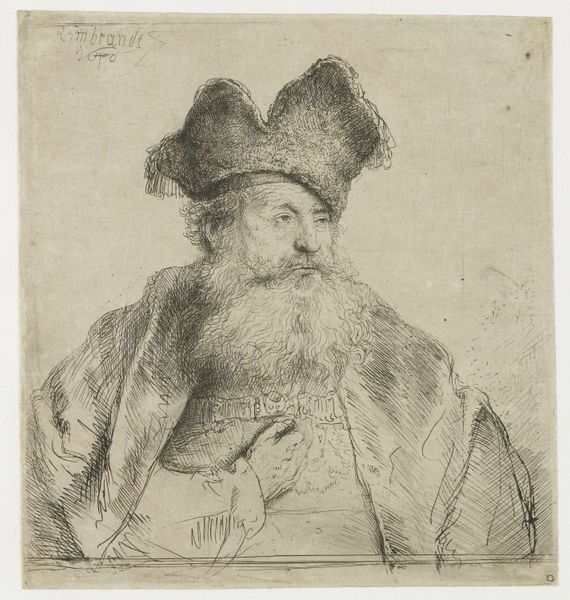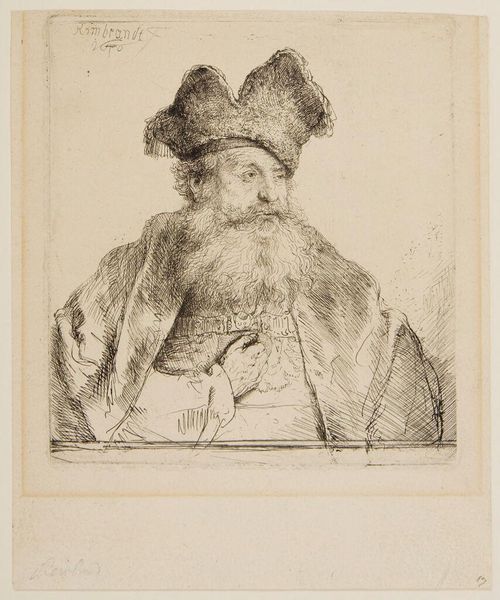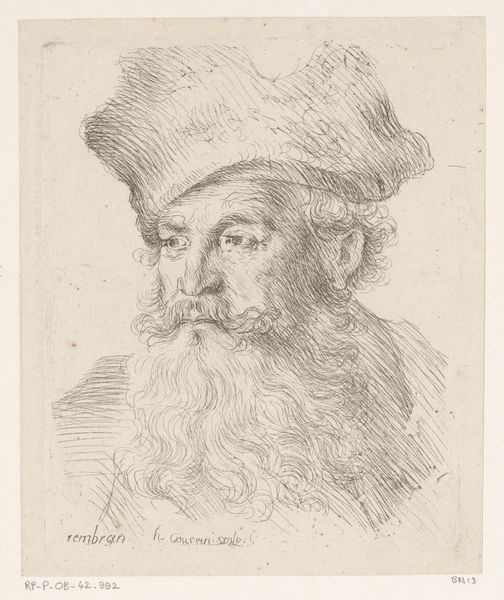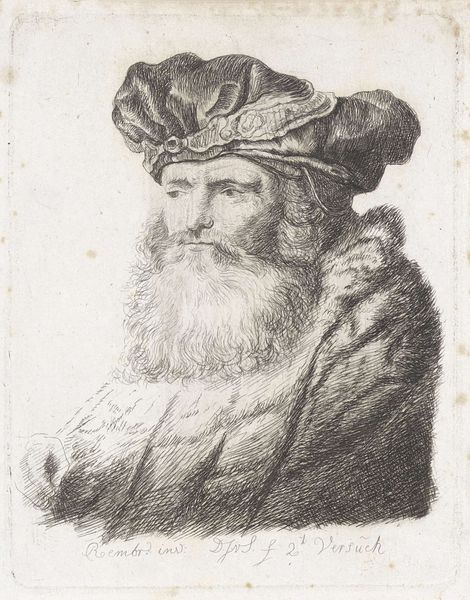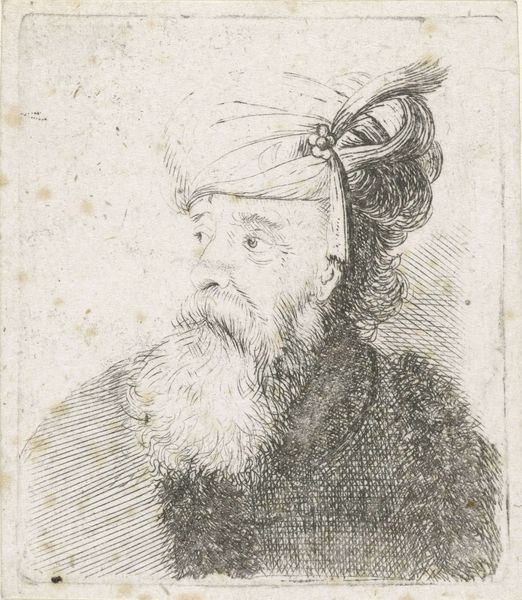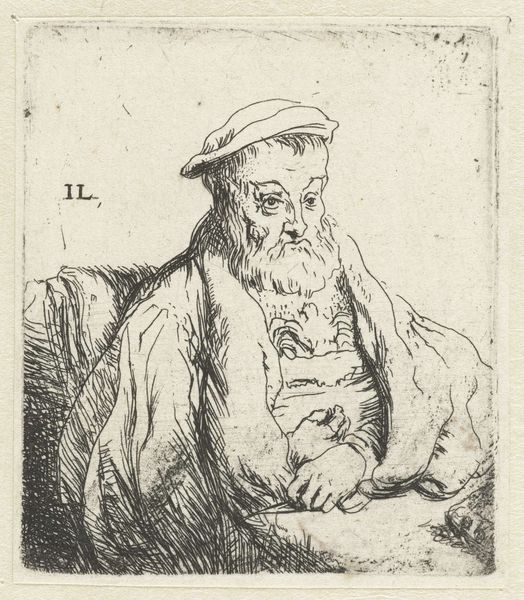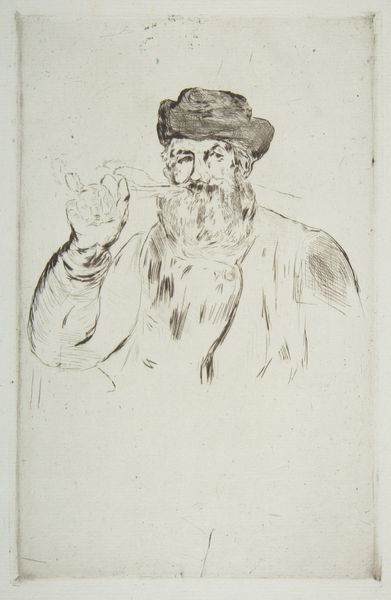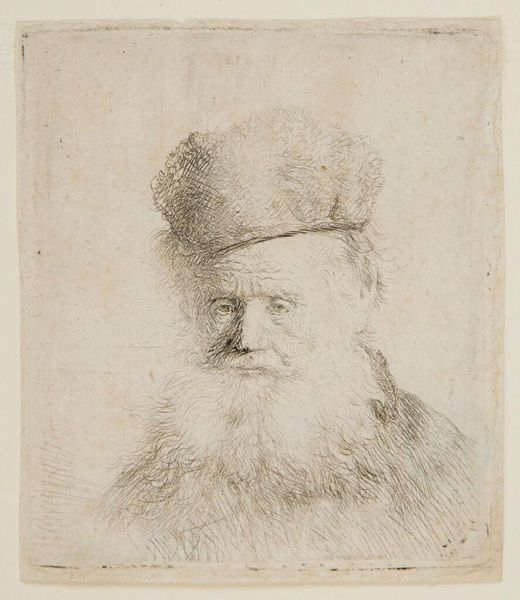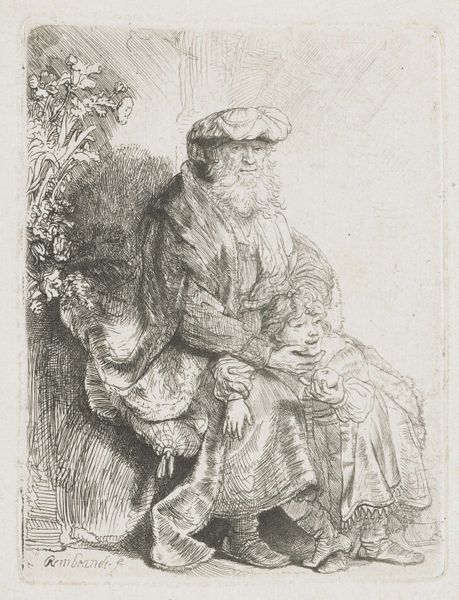
print, etching
#
portrait
#
baroque
#
dutch-golden-age
# print
#
etching
#
charcoal drawing
#
pencil drawing
#
line
#
realism
Dimensions: height 150 mm, width 139 mm
Copyright: Rijks Museum: Open Domain
Editor: Here we have Rembrandt van Rijn's "Old Man with a Divided Fur Cap" from 1640, an etching currently residing at the Rijksmuseum. It strikes me as a character study, but with a very light, almost ephemeral touch. What can you tell me about it? Curator: This print offers a fascinating glimpse into Rembrandt's approach to portraiture and the societal roles it played. In 17th century Dutch society, portraits were powerful markers of status, profession, and community affiliation. Editor: Interesting. Curator: What is particularly compelling here is Rembrandt's focus on an individual, possibly an elder from his community, without clear identifiers of status, save for the luxurious fur cap. How does that impact your reading of the image? Editor: I guess it shifts the focus away from a commissioned portrait to, perhaps, an observation of aging or character? Curator: Precisely. Rembrandt, throughout his career, challenged the conventions of portraiture, moving beyond mere likeness to explore inner life and the effects of time. Notice the lines etched around the eyes, the details in the beard – all achieved through a masterful manipulation of the etching needle. This was at a time when the print market was developing, providing opportunities for wider distribution of images. How does that fact influence your understanding of it? Editor: It suggests it was perhaps made for sale, not solely for personal record. And its relative accessibility meant more people saw the image. Curator: Exactly! Art was actively participating in social dialogue through its distribution in print form, not exclusively for the elite. It challenges the established hierarchy in art consumption and reception. I think, by pushing those boundaries of who deserved a portrait and the intimacy of detail included, Rembrandt opened doors for new kinds of representation and challenged social conventions. Editor: I’ve certainly gained a deeper understanding of how portraiture can engage in the social discourse of its time.
Comments
No comments
Be the first to comment and join the conversation on the ultimate creative platform.
